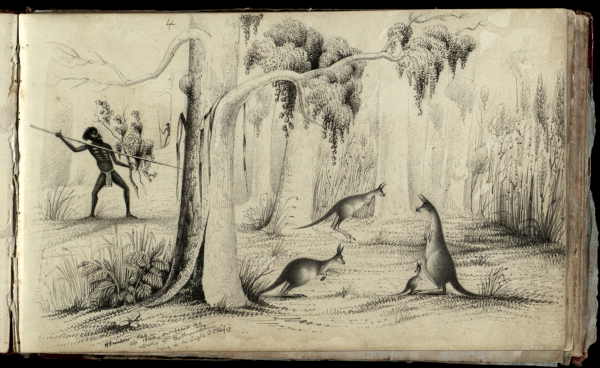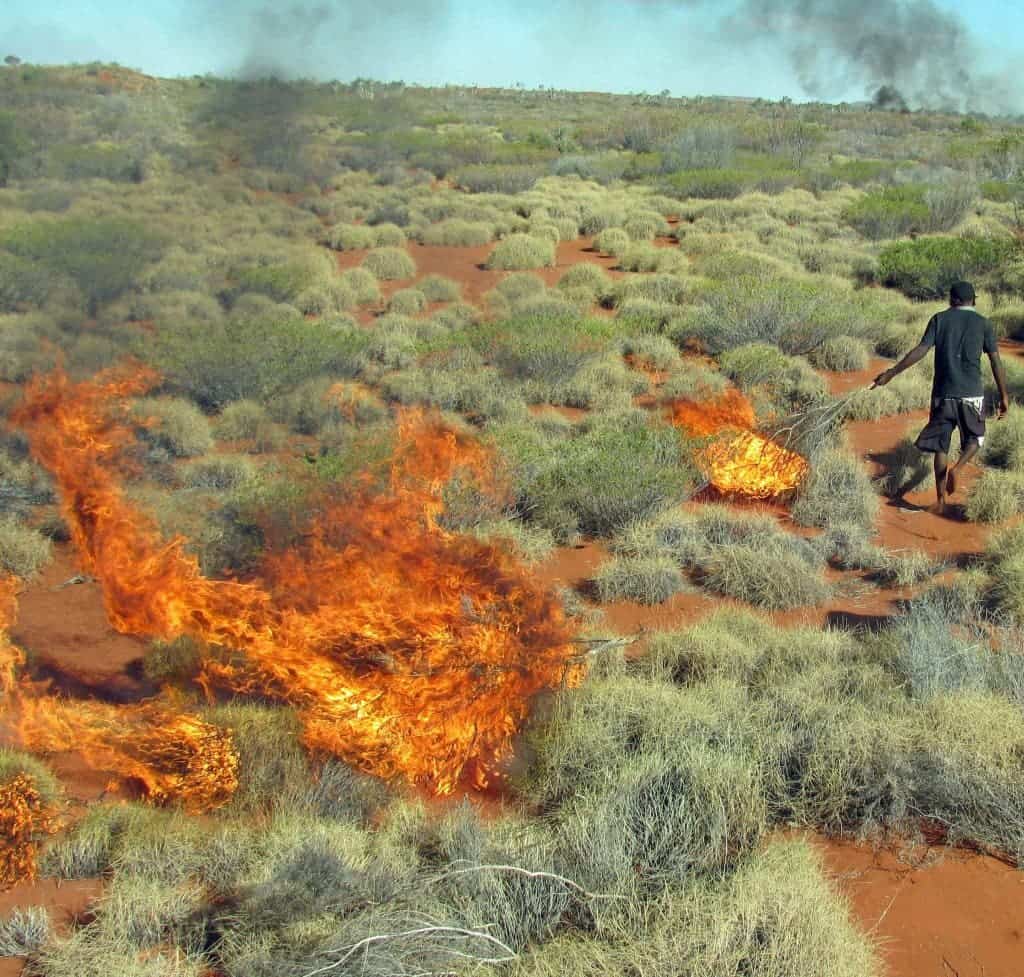
The Aboriginal Martu people have been hunting kangaroos and sand monitor lizards for over 2,000 years. During this time, the natives have not only lived sustainably, but also became unwilling conservationists helping kangaroo populations grow by sparking wild fires that help them catch lizards, a study by researchers at University of Utah found. In other remote areas where this subsistence practice ceased, the researchers recorded rapid declines in threatened species, which also might be due to increased predation by invasive predators.
[ALSO READ] Kangaroos use their tail as an extra leg when walking
Kangaroos and fires, who would’ve thought?

“We have uncovered a framework that allows us to predict when human subsistence practices might be detrimental to the environment and when they might be beneficial,” says Brian Codding, an assistant professor of anthropology.
“When subsistence practices have long histories, they are more likely to sustain ecosystem stability,” he says. “But when there are sudden changes to the way people make a living on the land, expect the result to be detrimental to the environment.”
Codding and colleagues conducted the study in a 60-by-35-mile area within western Australia’s Little Sandy Desert, where tiny aboriginal community of only 100 residents called Parnngurr hunts and lives. From 2007 until 2010, the researchers followed the Martu for some 50 hunts, when they would set small fires in spinifex grass – the dominant vegetation – to expose burrows occupied by 2-foot-long sand monitor lizards, or sand goannas, which they drag out of the holes, kill and roast for food.
Sand monitor lizard meat: it doesn’t taste like chicken
These same grasses the aborigines set on fire to hunt lizards become a patchy mosaic of five stages of vegetation at different post-fire ages that provide cover for kangaroos. Thus the kangaroos hide from predators like dingoes in older bush grass and spend most of their time eating shoots and fruits in patches of younger vegetation. Indeed, the study showed kangaroo populations were largest at moderate distances from Martu settlements. At those distances, there also were moderate levels of both kangaroo hunting and burning to expose lizard burrows.
“As people spend more time hunting in a region, kangaroos densities actually increase, but only up to a threshold, after which their populations decline,” Codding says.
Each fire covers a surface equal to roughly 10 acres. After the fire becomes extinguished, distinct vegetation stats to grow in five stages over a long period of time: (1) Nyurnma, or bare ground; (2) Waru-Waru, or early regrowth starting six months to a year post-fire; (3) Nyukura, the middle stage that begins one to five years after fire and features fruits such as bush tomato and bush raisin eaten by the Martu and hill kangaroos. The two final stages occur five to 15 years after fire: (4) Manguu, when spinifex grass forms hummocks and re-establishes dominance, and (5) Kunarka, dominated by old spinifex grass hummocks decaying at the center.
The study show that while the aborigines regularly hunt kangaroos, the negative effect they have on the marsupial population is outweighed by the positive outcomes from bush fires. With this in mind, it may be feasible for the Australian government to consider starting small-scale burning to bolster wildlife populations in certain areas. What’s most interesting, though, is how this story unfolded to reveal a perfect example of co-evolution. Nevermind it wasn’t intentional.
“The ‘conservation’ of kangaroos is an outcome that evolved,” he says. “It would be wrong to assume that Martu were intentionally managing a resource. As Martu have said, ‘That’s something white fellas do.’ But they are well aware their fires benefit kangaroos and other wildlife. In fact, they see humans as part of a larger ecosystem that has spiritual components” – the dreamtime place of creation where ancestors roamed.
“The dreamtime is essentially law passed down from ancestor beings to prescribe how people behave, what rituals to perform and how things came to be,” Codding says. “By hunting and lighting fires, the Martu are enacting the law passed down by dreamtime ancestors. So perhaps it’s not surprising to them it has positive results for the ecosystem.”
The findings were reported in the journal Human Ecology.






